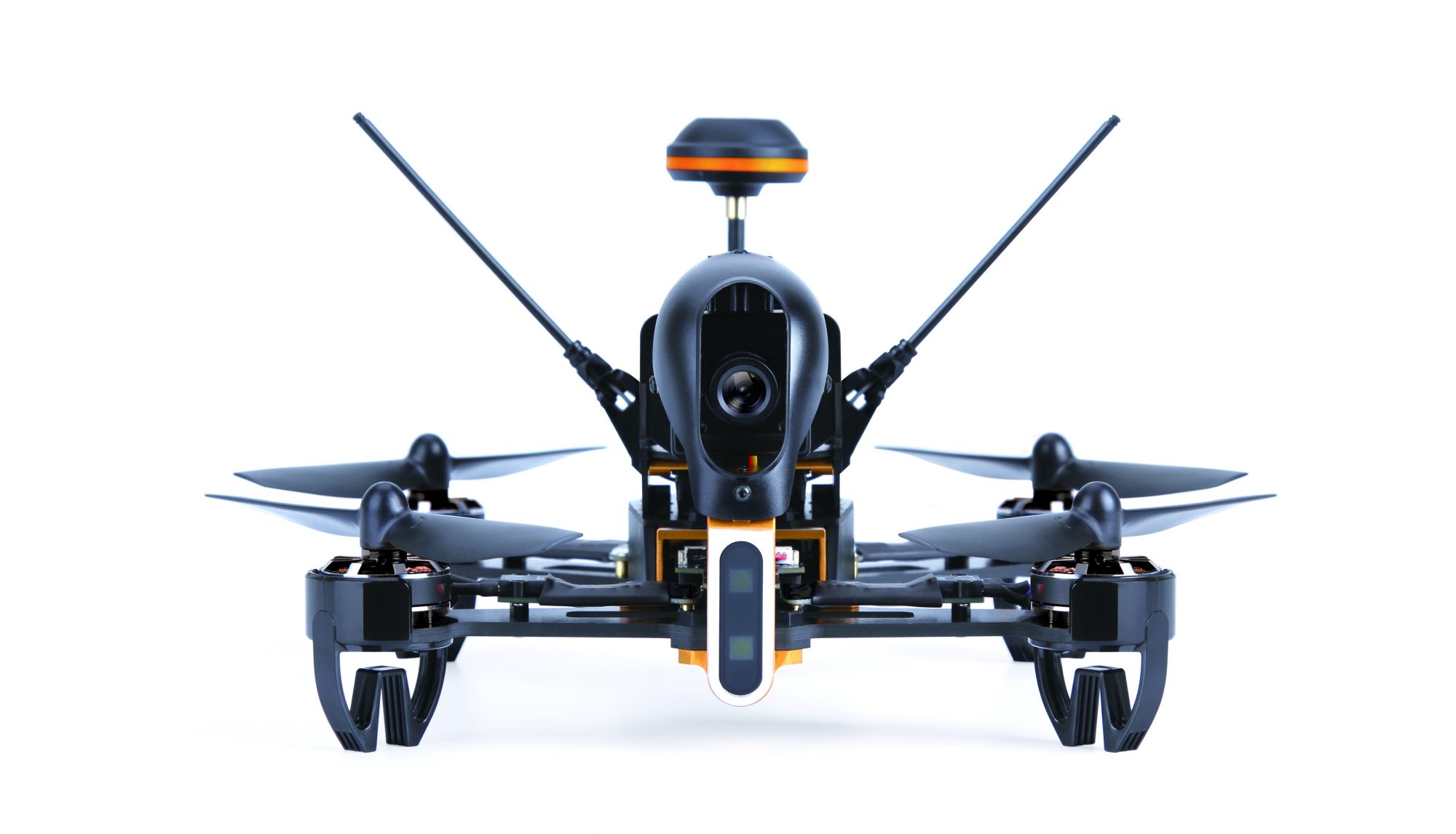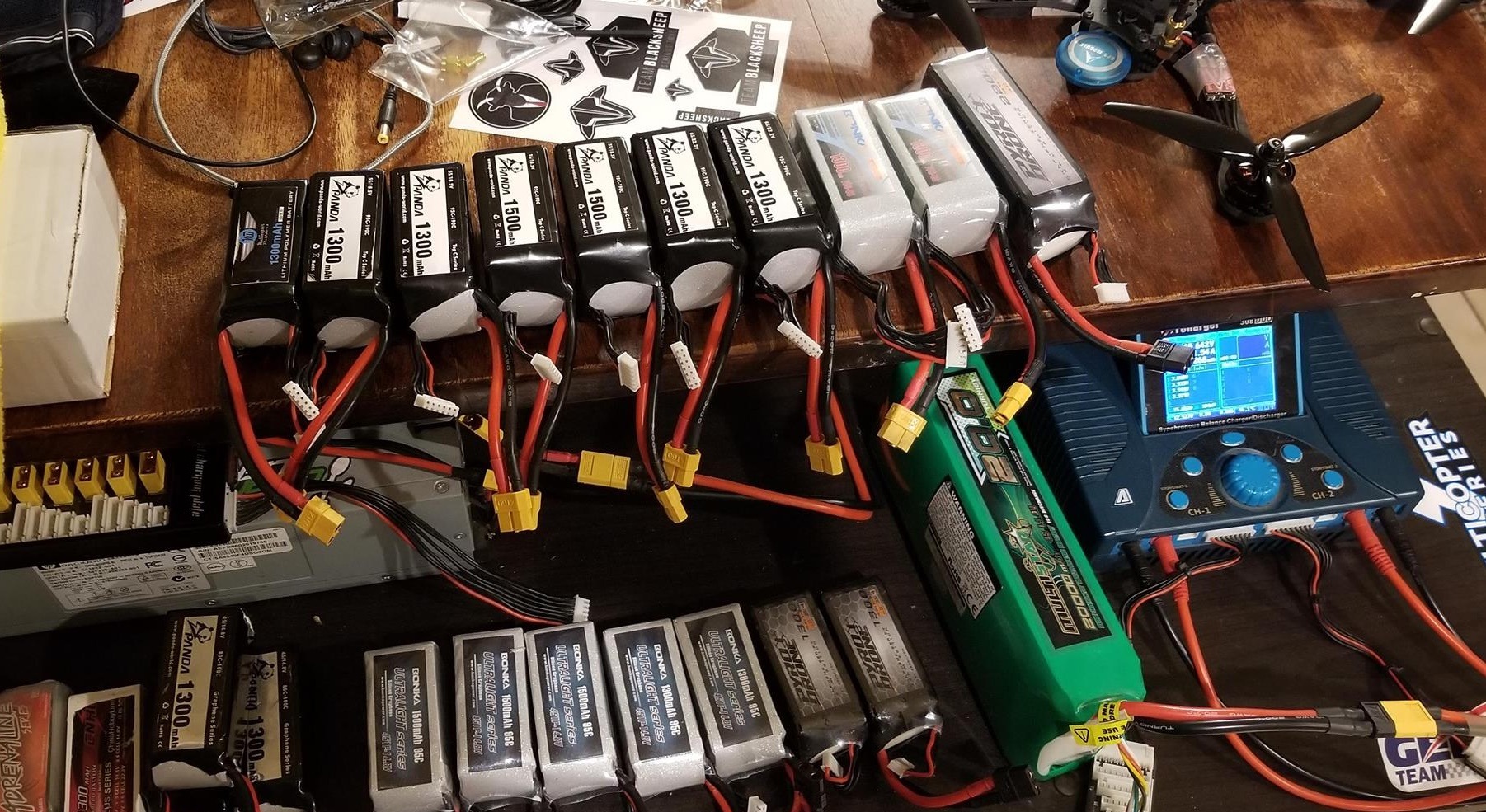Lipo battery
LiPo battery stands for “Lithium Polymer Accumulator” and describes nothing else than the energy storage (battery) for your racing drone. And yet, there is probably no “hotter” topic than these LiPos. Due to their unbelievable discharge performance, they enable the performance of a race quad in the first place – at the same time, they are probably the most controversial component in the FPV scene. Perhaps in model making at all. Or even more: In the car industry =)
In any case, LiPo batteries are a science in their own right, which we want to make a little bit more tangible for beginners. Here we go:
What is a LiPo battery and which LiPo battery do I need for my FPV Racing drone?
Lipo batteries are the energy stores of your drone. Unfortunately, they are available in different colors and shapes, sizes and power ratings and above all different connections. This means that you first have to find out which battery fits your racer.
This information can usually be found in the abbreviations in the name of the batteries. So that you can find out which battery is the right one for your quad, we have broken down these abbreviations.
What do the numbers, abbreviations, and specifications like 1300mAh LiPo battery 4S 14.8V 90C XT60 mean?
550mAh, 1300mAh or 1500mAh – The capacity of your battery
The capacity of batteries in the RC range is measured in milliamperes hours (mAh). In short, this number indicates how much energy is in your battery. Basically, you can say the higher the number the more energy is in it and the longer you can fly. Not faster! But longer!
However, it should be noted that with increased capacity on the size and weight of the battery increases. At some point, your quad is no longer strong enough to transport the battery, or it consumes too much energy because it is so heavy. It is therefore important to find a capacity that is light enough to secure the performance, but also large enough so that the flight fun is not neglected in the long run. The 1300mAH at the top doesn’t last very long with a 5″, but it has a blatant power/weight ratio.
Rough classification: 5-6″ Racecopter mostly use 1300 – 1500 mAh Lipos, 2″ Racer 250 – 600 mAh
3S, 4S, 5S and 6S, 11.1V, 14.8V or the cells of the battery (voltage)
The number of cells is hidden behind the “S” numbers. A cell has a nominal voltage of 3.7 volts. Our 4S from the example thus has 14.8V. Accordingly, the voltages of the batteries result:
1S – 3,7V | the small Micro-Copter and Tiny-Whoops have mostly 1S Lipos.
2S – 7,4V
3S – 11,1V | Smaller 2″ and 3″ racers usually use 2 to 3 cells.
4S – 14,8V | 4 cells are the “standard” for 5″ racers. Beginners often come with 3S batteries, too, but most 5″ racers designed for 4S can be operated with 3 cells, but then don’t have as much punch as with 4 or more cells.
5S – 18,5V
6S – 22,2V | With improving technology and high-quality parts, you can also see 5S and 6S Racers lately. But for this, you need extremely high-quality ESCs – otherwise, they will open up in the “Magic Smoke” and stew through.
With a higher voltage (if you imagine the power line as a water line, the voltage would be the water pressure), higher speeds are also possible. However, you have to make sure that the hardware does the same. A small rule of thumb is The more cells you want to use, the (relatively) smaller the kV number of motors should be and the higher the maximum current (A) of the ESCs.
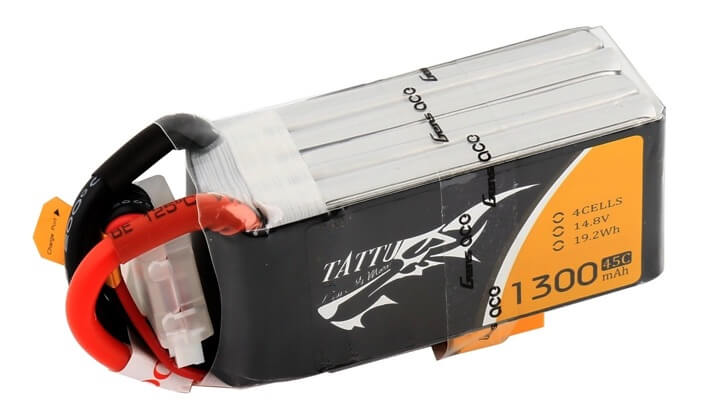
So it is often possible to operate a different number of cells on the same quad. It depends on the components whether they do the same or not. For example, I have created an Eachine Wizard x220 This one has been included in the RTF Pack. It comes with a 3S battery in the RTF pack. But it is also possible to fly the x220 with a 4S battery. With a friend, this worked very well, and he does not want to fly 3S since then. With me, an ESC burned out with the first flight with 4S and I had to replace this.
30C, 45C, 90C – Discharge capacity of your Lipo battery
The number 90C from our example indicates the discharge capacity or maximum permissible continuous current consumption of the battery. Here one can say that the discharge capacities of RC model batteries are quite high. (So they are not called “Super High Discharge Lipos” for nothing). C stands for Capacity – the value refers to the mAh from above and indicates how many times you can call for a duration. The 90 C at the battery means that you can take a current of maximum 20 times the capacity. In our case 1300 mAh x 90 = 117000 mA or 117 Ampere. The higher the C-value, the more power the battery can deliver.
Lately, I also see more often “burst” values of over 120C. “Burst” should stand for short-term retrieval. In my opinion, this information is a bit of nonsense: Any battery can deliver a lot of power for a short time, but without a time window this information is not useful to find any information for your setup. You also want to know what Lipo is necessary for your Quad, and only the “real” C-value for the permanent removal helps you.
If too much energy is taken from the battery at once, it can inflate and be damaged in the long run.
XT60, JST, XT30 – The connectors for your Lipo battery
XT60 is the design of the connector. Depending on the number of cells, you should also install a connector that is large enough to withstand the voltages and discharge currents. The XT60 has established itself as the “standard” from 3S at 5″ and larger. A reliable connector. Make sure that the cables have a sufficiently large cross-section.
For smaller Quads and TinyWhoops this plug is not used because of size and weight. My beloved Eachine Lizard 95 2” Racer flies with 3S rechargeable batteries (I have a bunch of Tattu 3S 650mAh for him) and for these, he has an adequate XT30 connection (see picture).
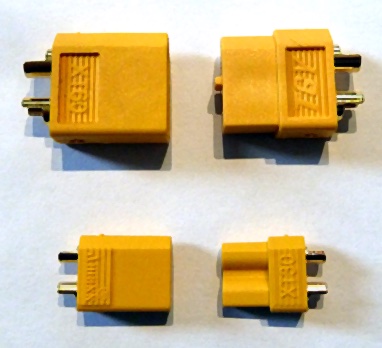
For 1S and 2S lipos you can get even smaller: JST are the connectors. There is a red JST RCY (often used for 2S) and several white ones: Nano JST (JST-SH, JST-SHR) Micro JST (JST-ZH, JST-ZHR) and JST-EH / JST EHR. Take a look at this in the picture. The very small JST EH are the standard for Toy-Copters like the Eachine E010. Then there are the somewhat “wider” Losi or Walkera plugs – more precisely Molex 51005-0200 (male) and 51006-0200 (female).
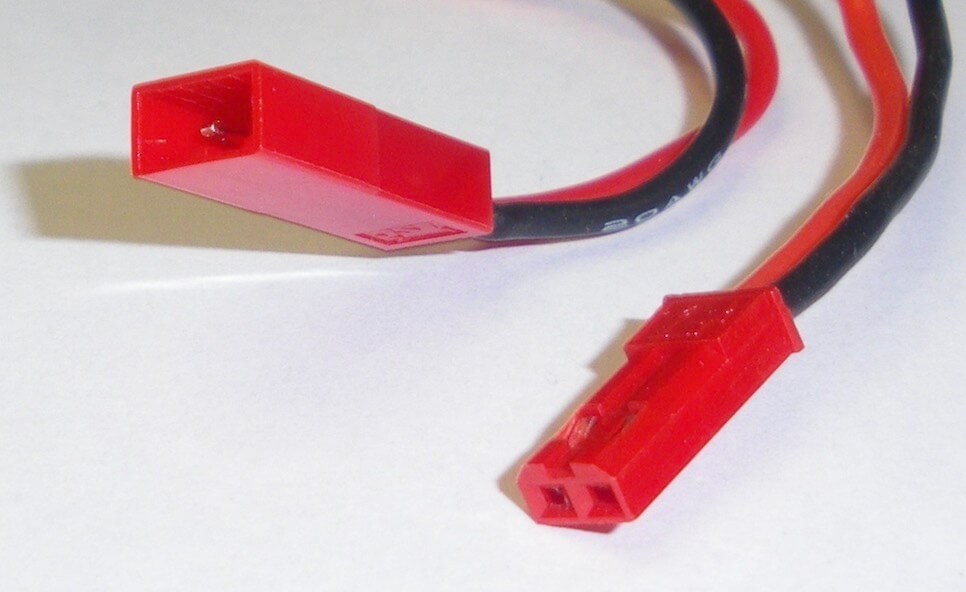

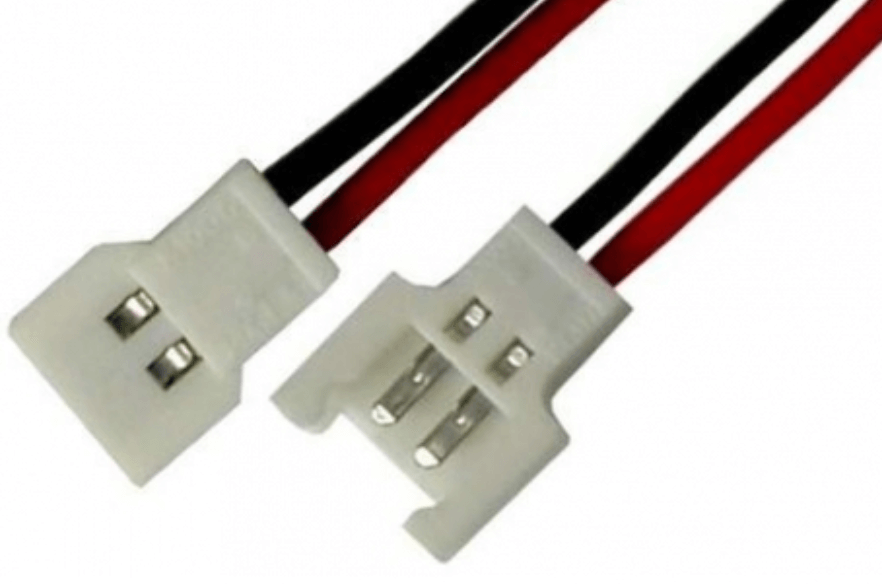
In addition, batteries with several cells usually have a balance connector with which the cells can be individually controlled (charged) and with which voltage differences in the cells can be measured. The connector is called JST XH (JST XHR) and has different widths depending on the number of cells.
Pin spacing of the connectors:
Nano JST (JST-SH) with 1.0 mm pin spacing
Molex Pico Blade with 1.25 mm pin spacing
Micro JST (JST-ZH) with 1.5 mm pin spacing
JST-XH with 2.5 mm pin spacing
How many batteries do I need to fly to the FPV?
A single battery only has a flight time of 3 to 12 minutes. How much it is with your combination of motor and lipo you should test out and then best set a timer on your spark when flying so that your battery is not discharged too far.
Since the flight times per battery are really not very long, you need between 4 and 10 batteries minimum for a slightly longer flight fun.
Charge the Lipo battery correctly: Which charger is right for my battery?
You can spend a lot of money on battery chargers. But I started with several small chargers first: A Charsoon DC-4S (identical in construction to Hobbytiger BC-4S15D) with which you can control the state of charge of every single cell with the help of the display. And it can also do 4S. Besides, I had two very simple automatic chargers: A SKYRC E3 and an IMaxRC IMax B3… So I could always charge 3 batteries (2S or 3S) at the same time, even if they were mixed concerning the number of cells.
Professional chargers and balance board are recommended for professional charging. But for the beginning, this is a little overkill and it’s not easy to handle parallel charging and charging current calibration right away. So I would definitely use a charger like the Charsoon for the beginning.
Attention: NEVER charge rechargeable batteries without paying attention! So some people have already lost their houses. No shit!
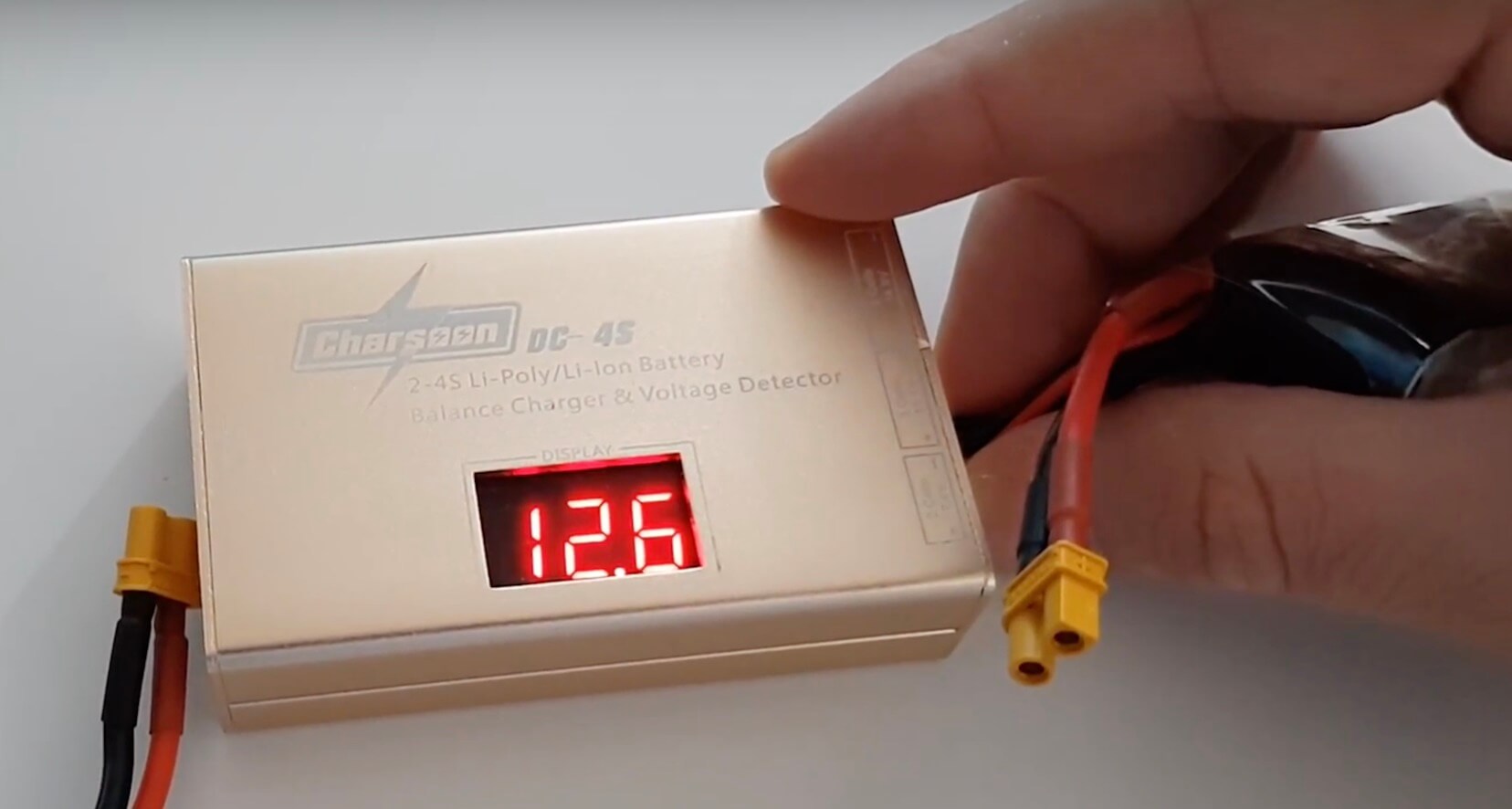
Lipo Storage Case: How to store Lipo batteries correctly
Lithium-Polymer batteries are not harmless! They are full of energy and can start to discharge and burn or explode even with the smallest “injuries” and cable breaks! Therefore storage and transport should only take place in special storage cases and Lipo storage bags. I got this Lipo-Bag from Amazon:
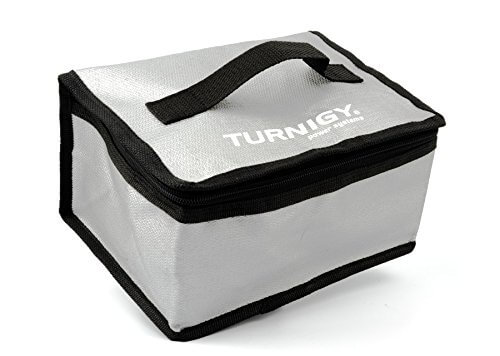
Storage of Lipos: Which tension is correct? Bearing tension
3,8V per cell
[More to come on update: Sign up here to be notified]
Lipo battery inflated: What to do if the battery has become thick?
[More comes with an update: Enter here to be notified]
Transporting Lipo batteries by plane
Here are the current (Feb. 2018) IATA (International Air Transport Association) regulations:
- LiPos with an output of less than 100 Wh may be carried in hand luggage up to 10 kg.
- LiPos of 100Wh-160Wh may be carried in hand baggage with a maximum of two
- LiPos larger than 160Wh is not permitted in passenger aircraft. They must be transported by cargo.
Example:
1300 mAh 11,1V (3S) => 14.4 WH
1500 mAH 18,5 (5S) => 27.75 WH
https://milliamps-watts.appspot.com/
It should, therefore, be possible to carry several Lipos with you in your hand luggage. It is important to use a fireproof lipo bag (see above). And don’t put any more cables in the bag – otherwise, it will look like a bomb on the x-ray ;-). And best of all print out the IATA guideline and flyer and enclose it.
And on top of that, it makes sense to have a look at your airline’s regulations and print them out if necessary.
Buying batteries – not so easy!
OK, one challenge was to find the right battery for your quad. Another one is to send it or have it sent to you. Until recently, I thought it was no longer possible to order Lipos from Banggood and have them delivered to Germany. But now I ordered a 3″ Racer and a bunch of rechargeable batteries. All of a sudden, it happened.
At the moment, there is a lot of movement in the logistics market concerning the possibility of shipping lithium polymer batteries. At DHL, new rules apply from 2018 – which means that most people simply don’t ship batteries via DHL.
RC Lipo Brands
Here you find some well-known brands for Racing drones
- Tattu / Gens Ace
- Zippy
- Turnigy
- Pulse (Very High Quality)
- CNHL (ChinaHobbyLine)
- Thunder Power (High End)
- Multistar
- Rhino
- Hacker (DE)
- Conrad Energy (DE)
I myself am a big Tattu fan. The Lipos von Tattu are a bit more expensive, but they really have power and can often be ordered at Amazon.com(sometimes even by Prime).
Any other questions about Lipos? Write them in the comments below!
